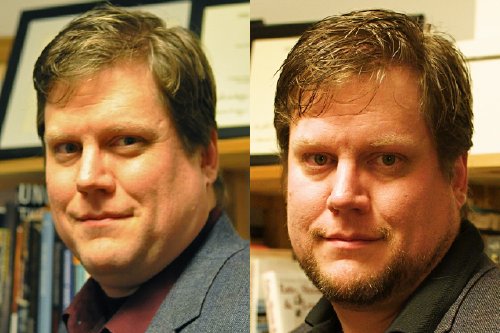Celestron, Meade and technology
To find out what Celestron and Meade are up to, it looks like you need to go to consumer electronics expos, not amateur astronomy expos like NEAF. Their sights are set on bigger things than the amateur astronomy community — and their focus is on technology.
Celestron’s CGEM mount, announced at Photokina, is a computerized equatorial mount with a twist: the computer allows you to fine-tune the mount’s polar alignment by slewing to a star based on where it thinks it should be, if the mount was properly aligned; the user then uses the mount’s latitude and azimuth adjustment controls to centre the star, at which point polar alignment is presumably perfect. It’s an interesting way to do it and, from what I can tell, it’s all in software. They’re putting this one under their usual line of 8- to 11-inch Schmidt-Cassegrains.
From what we know so far, Meade’s upcoming ETX-LS, which I assume will be a small Maksutov-Cassegrain like the existing ETX line, goes a lot further. To be announced at CES in January, the telescope includes GPS and a built-in CCD sensor, which based on this report sounds like it will be used both for alignment — in which case this thing may be able to centre stars by itself during alignment — and for astrophotography (via Gizmodo). User participation optional.
My concern is that optics and electronics fail at different rates: if one part of my Nexstar 5 SE fails, I can at least put my scope on a different mount, or my mount under a different scope. To say nothing of obsolescence: in 10 years, today’s go-to mounts will look quite rustic, while the optics of the scopes they support might still be good. There’s such a thing as too much integration.


 The more I learn about classical music, the more I realize how much this is true. I recently picked up
The more I learn about classical music, the more I realize how much this is true. I recently picked up